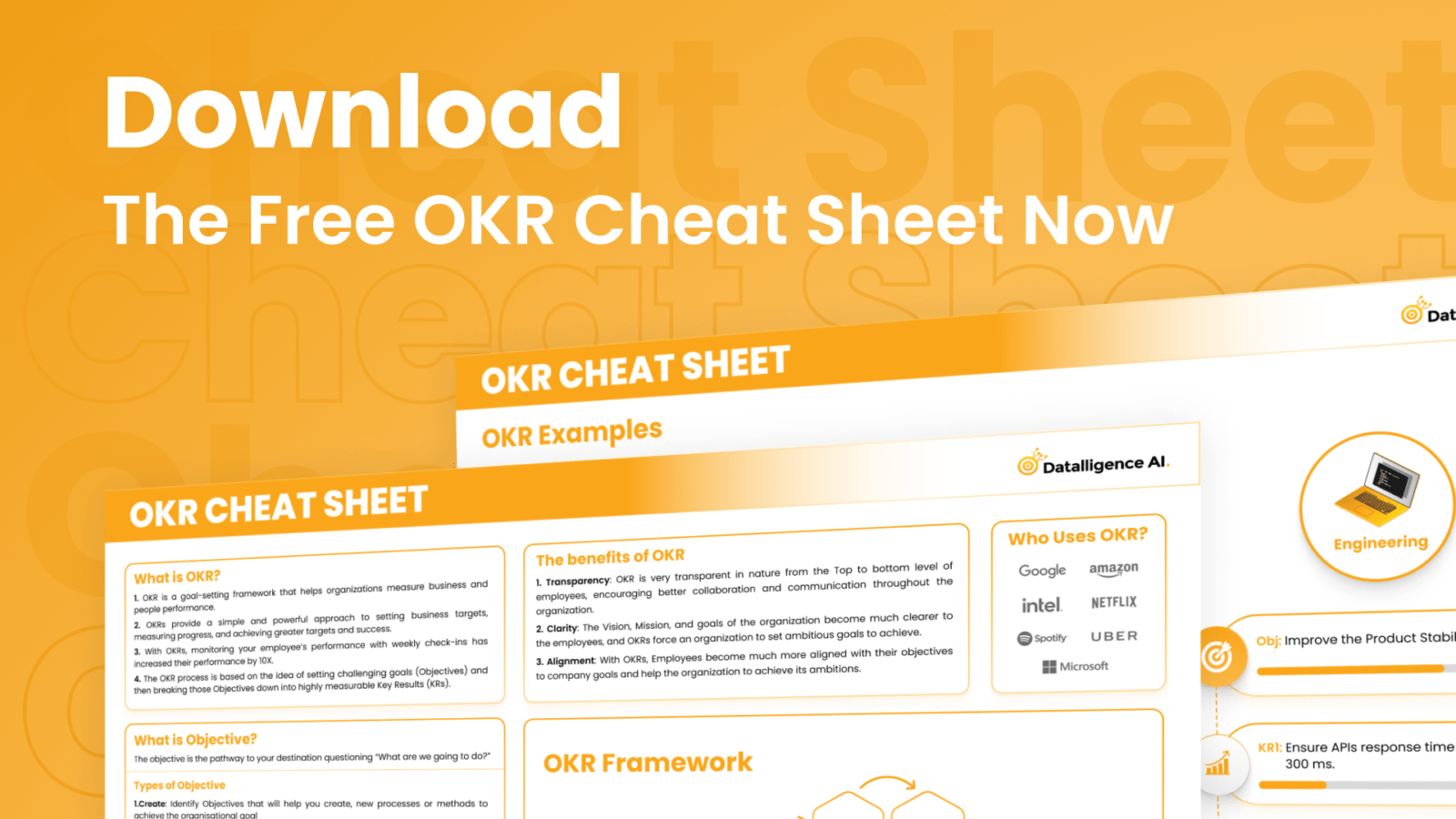Creating a high-performing team has always been the goal for managers across industries. After all, productive teams are a clear reflection of managerial effectiveness. But how do you measure performance in a way that balances both quantitative and qualitative factors?
Thanks to modern digital tools, we can now quantify many parameters that were once intangible, making the performance management process more efficient and insightful. In this blog, we’ll explore how to effectively measure team performance and discuss the role of performance management in achieving your goals.
What is Performance Management?
The performance management process is a strategic approach to ensuring that employees’ work aligns with organizational goals. It involves setting clear objectives, tracking progress, and providing continuous feedback to help employees improve. It’s a system that fosters communication between managers and employees to enhance productivity, motivation, and overall performance.
Why Track Team Performance?
Tracking team performance is essential for any organization that aims to stay competitive, efficient, and aligned with its long-term goals. When teams are well-tracked, organizations gain insights that not only help in decision-making but also drive continuous improvement and growth. Here’s why tracking team performance is crucial
Aligning with Organizational Goals
One of the main reasons to track team performance is to ensure that the team’s activities are aligned with the organization’s broader goals. By setting clear performance metrics and tracking progress, you can see how individual contributions are helping the organization achieve its vision and mission.
- Tracking performance ensures that teams understand how their efforts contribute to larger goals.
- It helps identify areas where the team is off-course and make timely corrections to stay aligned with organizational goals, a key element of the performance management
- Performance data can guide the creation of clear objectives that drive the overall success of the business.
Identifying Strengths and Weaknesses
Tracking team performance provides valuable insights into the strengths and weaknesses of both individuals and the team as a whole. This is a core function of the performance management process, as it helps managers develop tailored strategies for improving team effectiveness.
- Strengths can be leveraged for further growth and to optimize high-performing areas of the business.
- Weaknesses can be identified early, so corrective actions like training or strategic shifts can be made.
By analyzing the data from performance metrics, managers can pinpoint the specific areas where teams excel or struggle, allowing for focused interventions to enhance performance.
Boosting Accountability
Tracking performance creates a culture of accountability within teams. When team members know that their performance is being measured, they are more likely to take ownership of their tasks and outcomes, an important aspect of the performance management.
- Clear goals and performance metrics ensure that every team member knows their individual responsibilities.
- Regular tracking promotes self-awareness and motivates team members to meet or exceed expectations.
By keeping everyone accountable, organizations foster a more productive and results-driven culture, key to the overall success
Enhancing Communication and Collaboration
When team performance is tracked effectively, it opens the door to improved communication and collaboration, which are essential for any successful performance management process.
- Tracking metrics often involves regular meetings, feedback sessions, and discussions about progress and challenges.
- These interactions foster better cross-team communication and encourage a collaborative approach to solving problems.
As a result, teams learn to work together more efficiently and align their efforts to achieve common objectives, which is critical for long-term success.
Data-Driven Decision Making
Tracking performance allows managers to make data-driven decisions instead of relying on gut feelings or assumptions. With the right metrics, organizations can gather valuable insights into:
- Performance trends: Identifying periods of high or low performance to understand underlying factors.
- Resource allocation: Knowing where to allocate resources (time, budget, training) for the best results.
- Team dynamics: Understanding which team structures work best for achieving goals.
By using actual performance data, organizations can make more informed decisions about team management, strategy, and growth opportunities
Increasing Motivation and Engagement
When team performance is tracked and achievements are recognized, it creates a sense of accomplishment and boosts morale. Employees are motivated by clear feedback on their performance and the recognition of their contributions, all of which are part of a strong performance management process.
- Positive feedback for achieving targets motivates employees to maintain or increase their efforts.
- Recognition for team milestones fosters a sense of pride and strengthens team cohesion.
Tracking performance allows managers to celebrate successes and provide the necessary support for areas that need improvement, fostering a more engaged and committed workforce.
Improving Employee Development and Growth
Tracking team performance also plays a significant role in employee development. Performance data helps managers identify high-potential employees, as well as those who may need additional support or training, which is an essential aspect of the performance management process.
- Personalized development plans can be created based on performance data, ensuring that each employee gets the right resources to improve.
- Regular feedback and performance reviews allow managers to mentor employees, helping them grow and reach their full potential.
By tracking performance, organizations invest in the growth of their employees, which ultimately leads to a more skilled and productive workforce.
Optimizing Team Efficiency
Tracking team performance helps to identify inefficiencies in workflows, processes, and task management, an important factor in enhancing the performance management process.
- Spot bottlenecks that slow down progress or waste resources.
- Streamline operations by focusing on high-impact activities and removing low-value tasks.
This leads to better resource utilization and more efficient execution of projects and goals, ensuring that the team remains focused on high-impact work.
Predicting Future Performance
By analyzing historical performance data, organizations can better predict future outcomes and performance. Trends in individual and team performance can provide valuable foresight into:
- Team capacity: How much work a team can handle at a given time.
- Expected results: Predicting how likely teams are to meet future goals based on current performance.
This forecasting ability enables managers to plan ahead, allocate resources more effectively, and make adjustments before challenges arise, which contributes to the performance management
Tracking Organizational Health
Beyond just individual or team performance, tracking team metrics can also provide a snapshot of the overall organizational health. It reflects how well teams are functioning, how aligned they are with corporate goals, and where improvements are necessary.
- Monitoring performance helps identify signs of burnout, disengagement, or underperformance that can impact the larger organization.
- It helps ensure that the culture and performance across teams remain consistent with the organization’s values, a key aspect of the performance management.
Ensuring Continuous Improvement
Lastly, tracking team performance ensures a continuous improvement cycle. It creates a feedback loop where:
- Teams constantly assess their performance.
- They receive feedback and adapt accordingly.
- Performance data is used to drive further improvements in processes and outcomes.
This iterative process of monitoring, feedback, and improvement drives long-term success by enabling organizations to evolve and innovate in response to challenges, making the performance management process an ongoing part of organizational culture.
How Can You Track Team Performance?
Tracking team performance has always been challenging for organizations. However, setting the right KPIs and using tools designed for this purpose can make the process smoother.
Productivity Metrics:
- Sales teams are often highly metric-driven, with clear revenue targets and lead conversion rates.
- Creative teams may focus on the quality of work, innovation, and deadlines rather than hard metrics.
However, all teams, regardless of their focus, benefit from tracking their performance through the this process. It can help managers:
- Identify training and upskilling opportunities.
- Design improvement plans for employees to align with organizational needs.
- Ensure technical competence is up to par.
The Perfect Tool to Track Team Performance:
No matter how many productivity techniques you implement, the work of an underperforming team will always outweigh the contributions of a single high performer. This is why many project managers rely on OKR software like Datalligence to track and improve team productivity.
OKRs (Objectives and Key Results) are one of the most effective ways to align teams and track performance. Datalligence integrates seamlessly with its CFR (conversation, feedback, recognition) tools to foster continuous communication and engagement.
How Datalligence Supports the Performance Management Process
Datalligence is a comprehensive platform designed to streamline and optimize the process within organizations. It brings together multiple tools that focus on goal setting, tracking, feedback, and employee engagement, making it an essential solution for managing team performance:
OKRs (Objectives and Key Results): Clear Goal Setting
One of the core elements of the performance management process is setting clear and measurable goals. Datalligence leverages the OKR (Objectives and Key Results) framework to ensure that each team member’s goals are aligned with the organization’s overall objectives.
- Objectives are qualitative goals that define what needs to be achieved.
- Key Results are quantifiable outcomes that measure the achievement of objectives.
This structure not only helps teams stay focused on the most important tasks but also provides a way to track progress continuously. By setting clear goals at the start of a period and defining the measurable outcomes, teams and managers can have ongoing visibility into performance.
With Datalligence, teams can:
- Set top-down and bottom-up goals for greater alignment.
- Track progress in real-time, ensuring that the team stays on track.
- Adjust key results as needed to respond to changing business dynamics.
Alignments: Ensuring Consistent Direction Across Teams
For organizations to perform effectively, every department and team must work toward common goals. Datalligence facilitates this alignment through clear objective-level linkages across various teams and roles.
- Top-down alignment ensures that leadership’s vision cascades through to individual contributors.
- Bottom-up alignment allows for feedback from teams, giving employees a sense of ownership over their objectives.
With alignment tools in Datalligence, managers can map individual and team goals to company-wide objectives, creating a unified direction for all employees. This process also helps in identifying dependencies between teams, making it easier to understand how their work contributes to broader organizational success.
Check-ins: Ongoing Performance Tracking
This is not a one-time event but rather an ongoing cycle. Regular check-ins are a vital component in ensuring that teams stay aligned and motivated. Datalligence provides a structured way to track progress and conduct check-ins, making performance tracking an integral part of everyday operations.
- Regular updates keep managers informed on individual and team progress.
- Continuous feedback allows teams to make necessary adjustments before goals are off-track.
- Agility is fostered through frequent check-ins, making it easy to adapt to new challenges or changes.
These check-ins ensure that performance isn’t just measured at the end of a quarter or year but is tracked consistently, allowing for real-time corrections and course adjustments.
Recognition: Boosting Motivation and Engagement
Recognition is a key driver of employee engagement and motivation. Datalligence integrates performance recognition within the performance management process, helping teams stay motivated as they work toward their goals.
- Continuous recognition fosters a positive work culture and celebrates milestones.
- Recognition tied to performance ensures that employees are rewarded for achieving key results, boosting their morale.
With Datalligence, managers can easily recognize team achievements, highlight individual contributions, and encourage employees to maintain high standards. This ongoing recognition process helps maintain focus and drive throughout the performance cycle.
Conversations: Ongoing Performance Feedback
Performance feedback shouldn’t be limited to annual reviews. It’s an ongoing conversation that helps employees improve and stay engaged with their goals. Datalligence encourages performance-based conversations between managers and employees, which is an essential component of the performance management process.
- Real-time conversations provide employees with insights on how they’re doing and where they can improve.
- Performance-driven discussions help teams align on expectations, clarify uncertainties, and plan future steps.
- Career development conversations foster growth and support for employees, ensuring that performance aligns with personal development goals.
These ongoing dialogues between managers and employees help teams feel supported, engaged, and more connected to their performance targets.
Feedback: Encouraging Constructive Improvement
Bi-directional feedback plays a critical role in the performance management process. Datalligence encourages two-way feedback to ensure that both employees and managers contribute to performance assessments. This helps in building trust, mutual respect, and a deeper understanding of areas for improvement.
- Manager-to-employee feedback helps highlight strengths and areas for growth.
- Employee-to-manager feedback gives employees a voice in the process, fostering a collaborative relationship.
By providing constructive feedback from both sides, employees gain valuable insights into their performance, while managers can also learn about potential gaps in their leadership approach or areas for better support.
1:1 Meetings: Personalized Development and Support
Frequent 1:1 meetings between managers and their team members are essential for building strong relationships and ensuring personal growth. Datalligence makes it easy for managers to schedule and track these meetings, providing a structured approach to discuss performance, challenges, and growth opportunities.
- Identifying gaps in skills, performance, and support during these meetings ensures that employees receive the attention they need to thrive.
- Personalized development plans are created based on these 1:1 conversations, which align with the team member’s career trajectory.
These one-on-one discussions create a safe space for employees to express concerns, receive feedback, and gain the guidance they need to improve their performance.
Pulse Surveys: Gauging Team Sentiment
Understanding the sentiment and engagement level of a team is essential for long-term success. Datalligence integrates pulse surveys, allowing organizations to check the mood of the team regularly. These surveys provide valuable insights into team morale, employee engagement, and satisfaction.
- Employee well-being is tracked regularly to identify any signs of disengagement, burnout, or dissatisfaction.
- Predictive insights from pulse surveys help managers anticipate potential issues like employee attrition or reduced performance before they become critical.
By analyzing survey results, managers can address issues proactively, creating a supportive environment that fosters high performance.
180° & 360° Assessments:
Multi-Rater Feedback for Accurate Insights
Datalligence offers powerful tools for 180° and 360° assessments, which collect feedback from multiple sources (managers, peers, and subordinates). These assessments are invaluable for providing a comprehensive view of an employee’s performance, reducing bias, and ensuring accuracy.
- 360° feedback enables a holistic view of an employee’s performance, revealing blind spots that may not be visible from one perspective.
- Multi-rater assessments improve transparency and trust in the performance review process.
With these tools, managers can confidently make decisions about employee development, promotions, and other key areas based on a well-rounded assessment of performance.
Performance Management vs. Performance Appraisal
You might have heard the terms “performance management” and “performance appraisal” used interchangeably, but they are not the same.
- Performance Management is an ongoing, continuous process that aligns individual performance with organizational goals, encourages feedback, and supports growth through regular check-ins, training, and development.
- Performance Appraisal, on the other hand, is typically an annual or semi-annual event where an employee’s performance is evaluated against pre-set goals or standards. While performance appraisals offer a snapshot of performance, they don’t provide the ongoing support that the performance management offers.
Why Should You Measure Team Performance?
Here’s why tracking team performance is vital:
- Innovation:
- Tracking performance helps gauge the level of innovation within the team and whether it meets organizational goals.
- Motivation:
- Monitoring team performance helps identify gaps or challenges that employees face. Managers can provide support to motivate their teams and help them overcome obstacles.
- Happiness:
- A key aspect of employee wellness is happiness, which can be measured through regular feedback and pulse surveys.
- Potential:
- Tracking performance enables teams to achieve their full potential, creating an engaged workforce that drives organizational success.
Tips to Improve Team Performance
Here are some actionable tips for boosting your team’s performance:
- Clear Directions:
- Set clear goals so everyone knows what is expected. Clear direction improves focus and performance.
- Collaborative Approach:
- Encourage collaboration. Teams that work together efficiently are more productive and feel more accountable.
- Build Trust:
- Trust is vital for ownership. A team that trusts each other delivers better results.
- Recognition Programs:
- A robust recognition program helps create a pull force toward the goal, boosting morale and performance.
- Bi-directional Feedback:
- Ensure feedback flows both ways to foster healthy relationships and improve performance.
Conclusion
Tracking team performance is vital for any organization aiming to optimize results, improve efficiency, and foster a positive, accountable work culture. By aligning performance with organizational goals, identifying strengths and weaknesses, enhancing communication, and promoting continuous improvement, performance tracking enables teams to reach their full potential and ultimately drive organizational success. With the right tools and metrics in place, organizations can unlock the full power of their teams, creating a competitive advantage and ensuring sustained growth through the performance management process.











